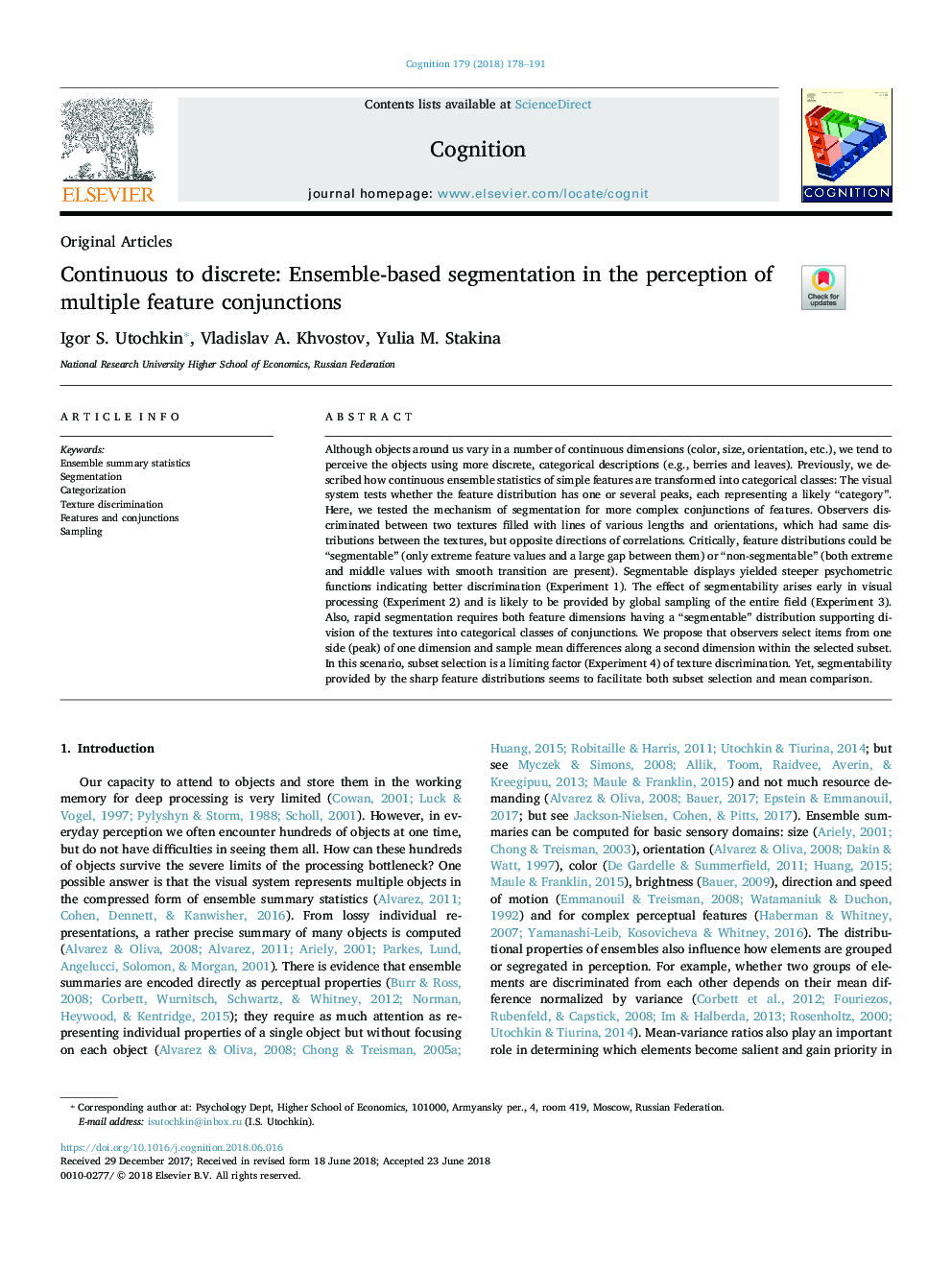| Article ID | Journal | Published Year | Pages | File Type |
|---|---|---|---|---|
| 7285175 | Cognition | 2018 | 14 Pages |
Abstract
Although objects around us vary in a number of continuous dimensions (color, size, orientation, etc.), we tend to perceive the objects using more discrete, categorical descriptions (e.g., berries and leaves). Previously, we described how continuous ensemble statistics of simple features are transformed into categorical classes: The visual system tests whether the feature distribution has one or several peaks, each representing a likely “category”. Here, we tested the mechanism of segmentation for more complex conjunctions of features. Observers discriminated between two textures filled with lines of various lengths and orientations, which had same distributions between the textures, but opposite directions of correlations. Critically, feature distributions could be “segmentable” (only extreme feature values and a large gap between them) or “non-segmentable” (both extreme and middle values with smooth transition are present). Segmentable displays yielded steeper psychometric functions indicating better discrimination (Experiment 1). The effect of segmentability arises early in visual processing (Experiment 2) and is likely to be provided by global sampling of the entire field (Experiment 3). Also, rapid segmentation requires both feature dimensions having a “segmentable” distribution supporting division of the textures into categorical classes of conjunctions. We propose that observers select items from one side (peak) of one dimension and sample mean differences along a second dimension within the selected subset. In this scenario, subset selection is a limiting factor (Experiment 4) of texture discrimination. Yet, segmentability provided by the sharp feature distributions seems to facilitate both subset selection and mean comparison.
Related Topics
Life Sciences
Neuroscience
Cognitive Neuroscience
Authors
Igor S. Utochkin, Vladislav A. Khvostov, Yulia M. Stakina,
